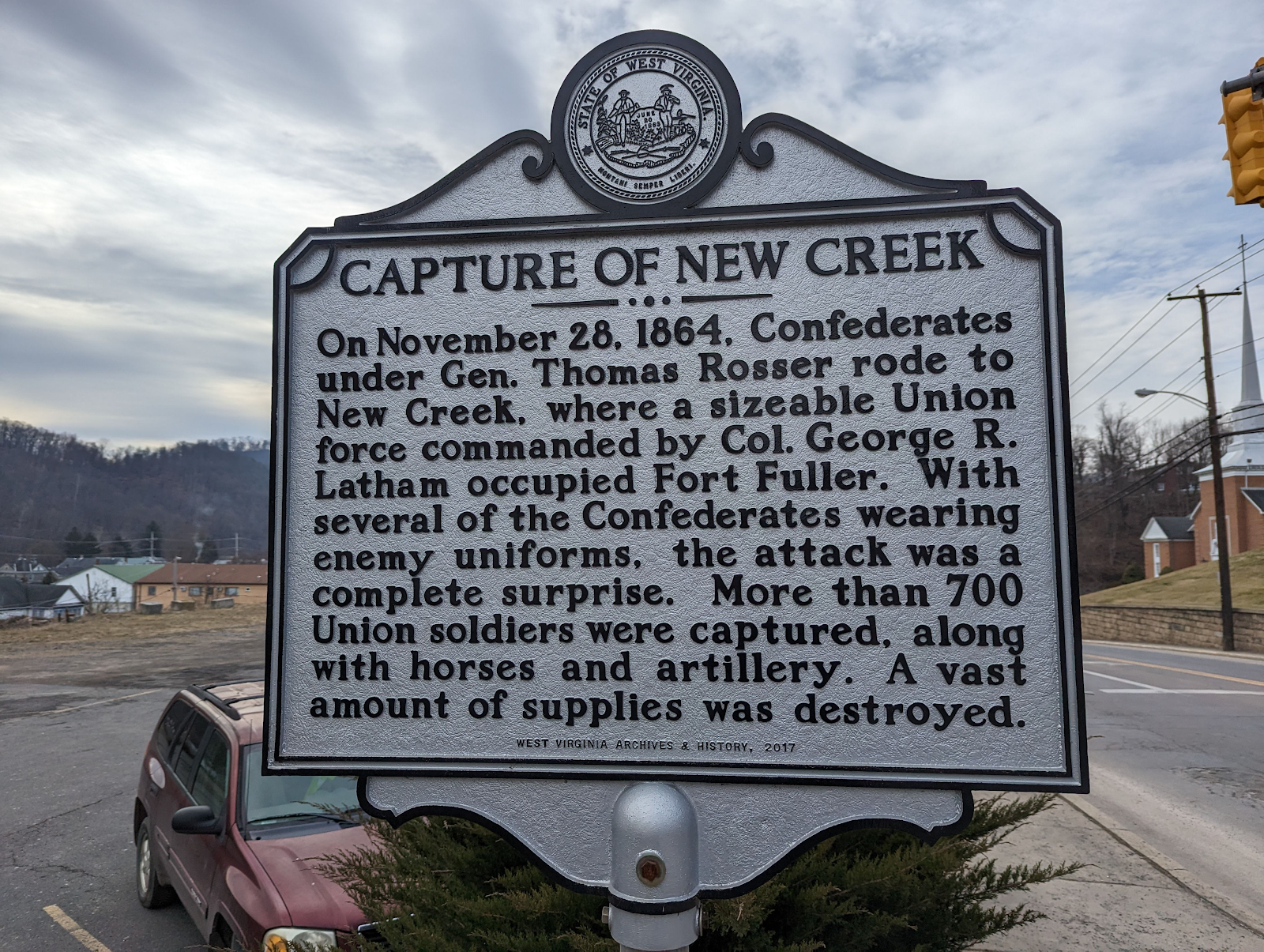https://www.hmdb.org/m.asp?m=4420 Here is a building with a curious past. Since its construction in 1848, it has been vandalized, dismantled, and moved four times - all because of its fame as John Brown's stronghold. The Fort's "Movements" 1848 Built as fire-engine house for U.S. Armory. 1859 Serves as stronghold for John Brown and his raiders. 1861-1865 Escapes destruction during the Civil War (only armory building to do so), but it is vandalized by souvenir-hunting Union and Confederate soldiers and later travelers. 1891 Dismantled and transported to Chicago Exposition. 1895 Rescued from conversion to stable and brought back to Harpers Ferry area to be exhibited on a farm. 1909 Purchased by Storer College and moved to campus.
1968 Moved by National Park Service to within 150 feet of its original location. OR That this nation might have a new birth of freedom, That slavery should be removed forever from American soil. John Brown and his 21 men gave their lives. To commemorate their heroism, this tablet is placed on this building, which has been known as John Brown's Fort by the Alumni of Storer College
1918 AND "I want to free all the negroes in this [slave] state ... if the citizens interfere with me I must only burn the town and have blood," declared John Brown at the start of the October 16-18, 1859 raid. Brown and his 18 men captured and held the armory for 36 hours. As the tide turned against the raiders trapped in the fire engine house in front of you, their leader John Brown ordered "take aim, and make every shot count." U.S. Marines battered through the door, wounded and captured Brown, and ended the raid. Brown was hanged for murder, treason and inciting a slave insurrection. Just a few years later, United States Colored Troops marched through Harpers Ferry to fight for the Union and freedom. John Brown's last stand - in an old firehouse. Despite the subsequent lack of any active armory, the city remained strategically important to both sides in the Civil War. The town became an "international border crossing" after Succession, and the rivers and railroads all meet there, not to mention the C&O Canal (and, today, the Appalachian Trail). Later, Lee needed to keep his supply lines open up through Harpers Ferry if he hoped to sustain his invasion of the North. He famously split his army so half, under Jackson, could defeat the entrenched Union troops and secure the town. It did. But later in the war the Union returned. And later still they lost control again. Etc...
That place where John Brown's raid ended became Holy Ground, and the building itself was moved several times. It was connected to a HBCU on the farm grounds, and the Niagara Movement met here, going on to form the NAACP. Here is one spot the building was moved to, before getting moved back into town.
https://www.hmdb.org/m.asp?m=8316 https://www.hmdb.org/m.asp?m=8317
"Here on the scene of John Brown’s martyrdom we reconsecrate ourselves, our honor, our property to the final emancipation of the race which John Brown died to make free… Thank God for John Brown!... and all the hallowed dead who died for freedom! W.E.B. Du Bois, Niagara Movement general secretary and NAACP founding member
On August 17, 1906, members of the Niagara Movement walked silently past where you are standing. One of the first modern civil rights organizations in America, the Niagara Movement fought for racial equality and political representation at all social levels. Its members’ efforts laid the foundation for creating the National Association for the Advancement of Colored People (NAACP) in 1909. Niagara participants came here to the site of John Brown’s Fort to honor Brown, who died to end slavery.
Black scholar Dr. Benjamin Quarles described their arrival: “As they neared their destination they formed a procession, single file, led by Owen M. Waller, a physician from Brooklyn. Defying stone and stubble, Waller took off his shoes and socks and walked barefoot as if treading on holy ground.” Other members followed suit and together they walked barefoot to the fort. As they circled the fort they sang verses of John Brown’s Body and The Battle Hymn of the Republic."
In July 1896, members of the National League of Colored Women traveled here from Washington, D.C. and posed for their picture in front of John Brown’s Fort. The women came to pay homage to Brown and his raiders, establishing a pilgrimage tradition for other civil rights organizations.
Mary Church Terrell, the League’s first president, helped lead its fight against lynchings and racial segregation. She described the organization’s mission as: “lifting as we climb, onward and upward we go…we knock at the bar of justice asking an equal chance.”
 |





Comments
Post a Comment